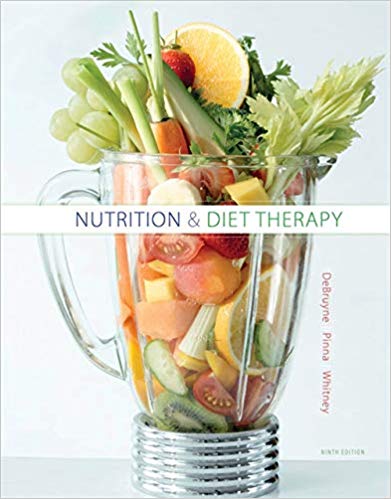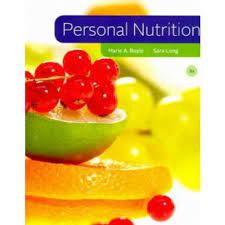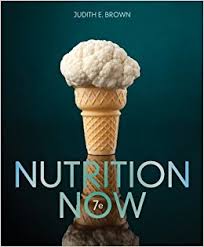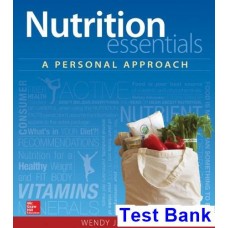Test Bank For Nutrition and Diet Therapy 9th Edition by Linda Kelley DeBruyne
Original price was: $75.00.$35.00Current price is: $35.00.
Test Bank For Nutrition And Diet Therapy 9th Edition By Linda Kelley DeBruyne is an essential study aid for students enrolled in nutrition and diet therapy courses. The book provides a comprehensive overview of the latest research on nutrition and diet therapy, as well as detailed information on how to apply these principles in clinical practice.
In addition, the Test Bank For Nutrition And Diet Therapy 9th Edition includes a variety of question types to help students prepare for exams. With its clear and concise coverage of the most important concepts in nutrition and diet therapy, the Test Bank For Nutrition And Diet Therapy 9th Edition By Linda Kelley DeBruyne is an invaluable resource for any student interested in pursuing a career in this field.
Digital item No Waiting Time Instant Download
ISBN-10: 1305110404 ISBN-13: 9781305110403
Description
Test Bank For Nutrition and Diet Therapy 9th Edition by Linda Kelley DeBruyne
True / False
1. When carbohydrates are plentiful, the human brain depends almost exclusively on them as an energy source.
a. True
b. False
ANSWER: True
DIFFICULTY: Bloom’s: Remember
REFERENCES: 2.1 The Chemist’s View of Carbohydrates
LEARNING OBJECTIVES: NUTR.DEBR.16.02.2.1 – Identify the monosaccharides, disaccharides, and polysaccharides common in nutrition and list their major food sources.
2. Most fiber-rich foods are kcalorie-free.
a. True
b. False
ANSWER: False
DIFFICULTY: Bloom’s: Understand
REFERENCES: 2.1 The Chemist’s View of Carbohydrates
LEARNING OBJECTIVES: NUTR.DEBR.16.02.2.1 – Identify the monosaccharides, disaccharides, and polysaccharides common in nutrition and list their major food sources.
3. A person consumes 2600 kcalories per day and 50 grams of carbohydrate from concentrated sweets. According to the USDA Food Patterns recommendations, this person’s sugar intake is within the guidelines.
a. True
b. False
ANSWER: True
DIFFICULTY: Bloom’s: Apply
REFERENCES: 2.3 Health Effects of Sugars and Alternative Sweeteners
LEARNING OBJECTIVES: NUTR.DEBR.16.02.2.3 – Describe how added sugars can contribute to health problems and how alternative sweeteners may help to limit kcalories and sugar intake.
4. Experts agree that moderate amounts of sugar in the diet may pose a number of major health risks.
a. True
b. False
ANSWER: False
DIFFICULTY: Bloom’s: Understand
REFERENCES: 2.3 Health Effects of Sugars and Alternative Sweeteners
LEARNING OBJECTIVES: NUTR.DEBR.16.02.2.3 – Describe how added sugars can contribute to health problems and how alternative sweeteners may help to limit kcalories and sugar intake.
5. A person consumes 2000 kcalories per day and 200 grams of carbohydrate. This person meets the current dietary recommendations for carbohydrate intake.
a. True
b. False
ANSWER: False
DIFFICULTY: Bloom’s: Understand
REFERENCES: 2.4 Health Effects of Starch and Dietary Fiber
LEARNING OBJECTIVES: NUTR.DEBR. 16.02.2.4 – Identify the health benefits of, and recommendations for, starches and fibers.
6. Cindy consumed 2 servings of vegetables, 2 servings of fruit, 5 servings of whole grains, and 2 servings of legumes during the day. Cindy meets the DV recommendation for fiber for the day.
a. True
b. False
ANSWER: True
DIFFICULTY: Bloom’s: Apply
REFERENCES: 2.4 Health Effects of Starch and Dietary Fibers
LEARNING OBJECTIVES: NUTR.DEBR.16.02.2.4 – Identify the health benefits of, and recommendations for, starches and fibers.
7. There are no health consequences associated with consuming excess fiber.
a. True
b. False
ANSWER: False
DIFFICULTY: Bloom’s: Apply
REFERENCES: 2.4 Health Effects of Starch and Dietary Fibers
LEARNING OBJECTIVES: NUTR.DEBR.16.02.2.4 – Identify the health benefits of, and recommendations for, starches and fibers.
8. All plant foods have attributes that may reduce the risks of colon and rectal cancers.
a. True
b. False
ANSWER: True
DIFFICULTY: Bloom’s: Remember
REFERENCES: 2.4 Health Effects of Starch and Dietary Fibers
LEARNING OBJECTIVES: NUTR.DEBR.16.02.2.4 – Identify the health benefits of, and recommendations for, starches and fibers.
9. Carbohydrate-rich foods are equal in the degree to which they elevate both blood glucose and insulin concentrations.
a. True
b. False
ANSWER: False
DIFFICULTY: Bloom’s: Remember
REFERENCES: 2.5. The Glycemic Index in Nutrition Practice
LEARNING OBJECTIVES: NUTR.DEBR.16.02.2.5 – Describe the glycemic index and explain why its use in disease prevention is controversial.
10. Sugar consumption is a major cause of tooth decay.
a. True
b. False
ANSWER: True
DIFFICULTY: Bloom’s: Apply
REFERENCES: 2.3 Health Effects of Sugars and Alternative Sweeteners
LEARNING OBJECTIVES: NUTR.DEBR.16.02.2.3 – Describe how added sugars can contribute to health problems and how alternative sweeteners may help to limit kcalories and sugar intake.
Multiple Choice
11. The main function of carbohydrates in the body is to _____.
a. furnish the body with energy
b. provide material for synthesizing cell walls
c. synthesize fat
d. insulate the body to prevent heat loss
e. build mitochondria
ANSWER: a
DIFFICULTY: Bloom’s: Understand
REFERENCES: 2.1 The Chemist’s View of Carbohydrates
LEARNING OBJECTIVES: NUTR.DEBR.16.02.2.1 – Identify the monosaccharides, disaccharides, and polysaccharides common in nutrition and list their major food sources.
12. Which carbohydrate is composed of a single sugar unit?
a. starch
b. glycogen
c. sucrose
d. some fibers
e. fructose
ANSWER: e
DIFFICULTY: Bloom’s: Understand
REFERENCES: 2.1 The Chemist’s View of Carbohydrates
LEARNING OBJECTIVES: NUTR.DEBR.16.02.2.1 – Identify the monosaccharides, disaccharides, and polysaccharides common in nutrition and list their major food sources.
13. The _____ are the basic units of all carbohydrates.
a. monosaccharides
b. disaccharides
c. polysaccharides
d. sucrose molecules
e. insoluble fibers
ANSWER: a
DIFFICULTY: Bloom’s: Understand
REFERENCES: 2.1 The Chemist’s View of Carbohydrates
LEARNING OBJECTIVES: NUTR.DEBR.16.02.2.1 – Identify the monosaccharides, disaccharides, and polysaccharides common in nutrition and list their major food sources.





Be the first to review “Test Bank For Nutrition and Diet Therapy 9th Edition by Linda Kelley DeBruyne”